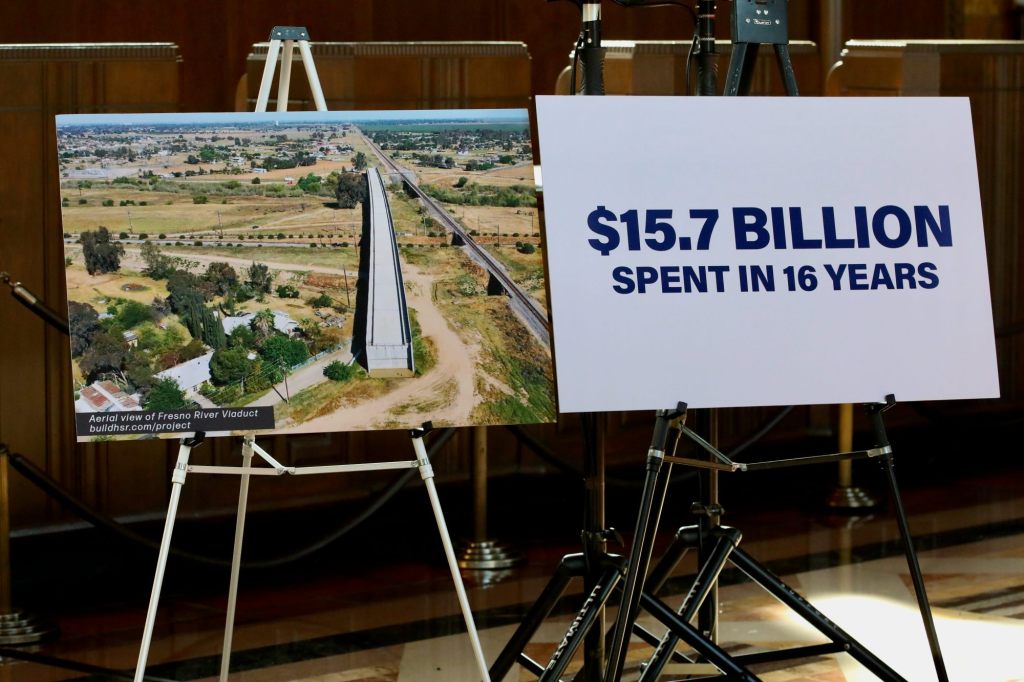
If Gov. Gavin Newsom wanted to show America his leadership prowess, he would cancel the California high-speed rail project.
He actually has a long history of questioning this boondoggle. While lieutenant governor, in 2014 he said on the Ben Shapiro Show, “I would take the dollars and redirect it to other, more pressing infrastructure needs, and I am not the only Democrat that feels this way.”
When Newsom assumed the governor’s office in 2019, he said in his first State of the State address, “But let’s be real. The project, as currently planned, would cost too much and take too long. There’s been too little oversight and not enough transparency.”
This led to premature celebration among critics of the project that maybe the governor would do what needed to be done. But that’s not what happened.
The project keeps moving along even though it’s been 17 years since voters approved bonds for it with Proposition 1A in 2008. Projected costs have ballooned from as low as $33 billion to over $100 billion. Today, the only segment even close to being completed is in the Central Valley, Merced to Bakersfield, costing between $32.7 billion and $36.3 billion. Californians will be lucky, if that’s the word, to ride from Bakersfield to Merced ten years after the entire project was supposed to be completed.
President Donald Trump in July appropriately canceled $4 billion in federal funding.
The Legislature just passed Senate Bill 840, by Sen. Monique Limón, who next month will become president pro tem. The bill allocates cap-and-trade funds. In the Assembly analysis, in the bill “the only continuous appropriation amount that appears to be guaranteed is $1 billion for high-speed rail.”
The funding’s purpose is to continue funneling money to construction companies and union workers, former state Sen. John Moorlach told us. He tried to cancel the project during his time in office, 2015-20. In 2018, a proposal of his, Senate Bill 1463, to use cap-and-trade funds more sensibly, was incorporated into Senate Bill 901, by Sen. Bill Dodd, D-Napa. It allocated $200 million to prevent wildfires, which spew greenhouse gases, by undergrounding power lines.
“The argument is high-speed rail will reduce greenhouse gases by using electricity, instead of fossil fuels for cars and airplanes,” Moorlach said. “But that ignores how much electricity comes from fossil fuels.” The U.S. Energy Administration reported in 2024 natural gas-fired power plants provided 35% of California’s electricity. The state’s goal of 100% renewable electricity by 2045 is two decades away. Even as the California Council on Science and Technology estimates increased demand of 76% by 2045. And consumers here pay 36.6 cents per kilowatt hour, more than double the national average of 17.5 cents.
Government budgets always are a matter of priorities. The HSR hasn’t penciled out for 17 years, and never will. It’s especially irresponsible to waste billions more at a time of endemic state deficits. If Newsom can’t get the gumption to veto SB 840 this year, its $1 billion “continuous appropriation” must be canceled next year.
To show his leadership, the train to nowhere needs to be ended before Newsom can hope to take his presidential bid somewhere.



